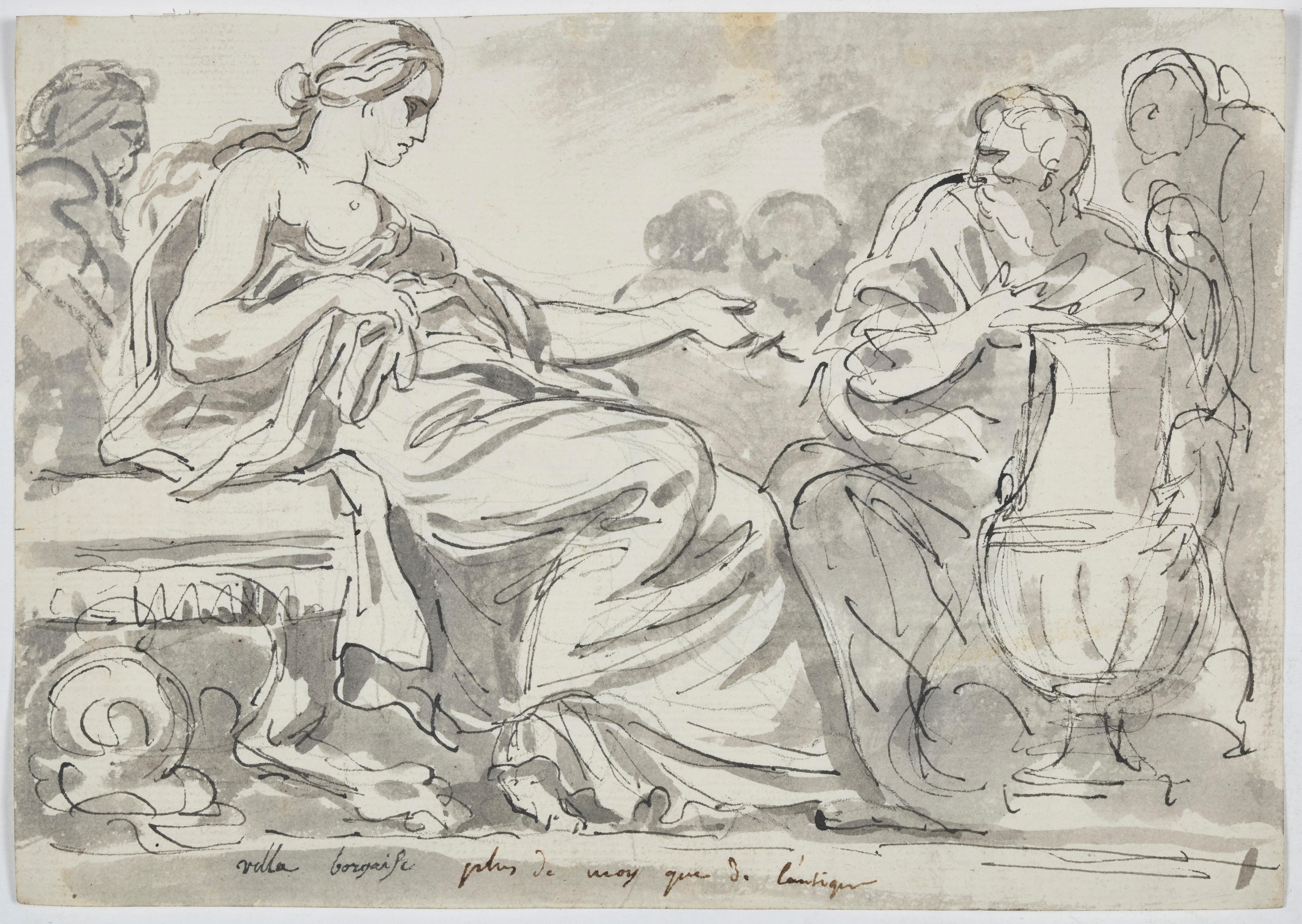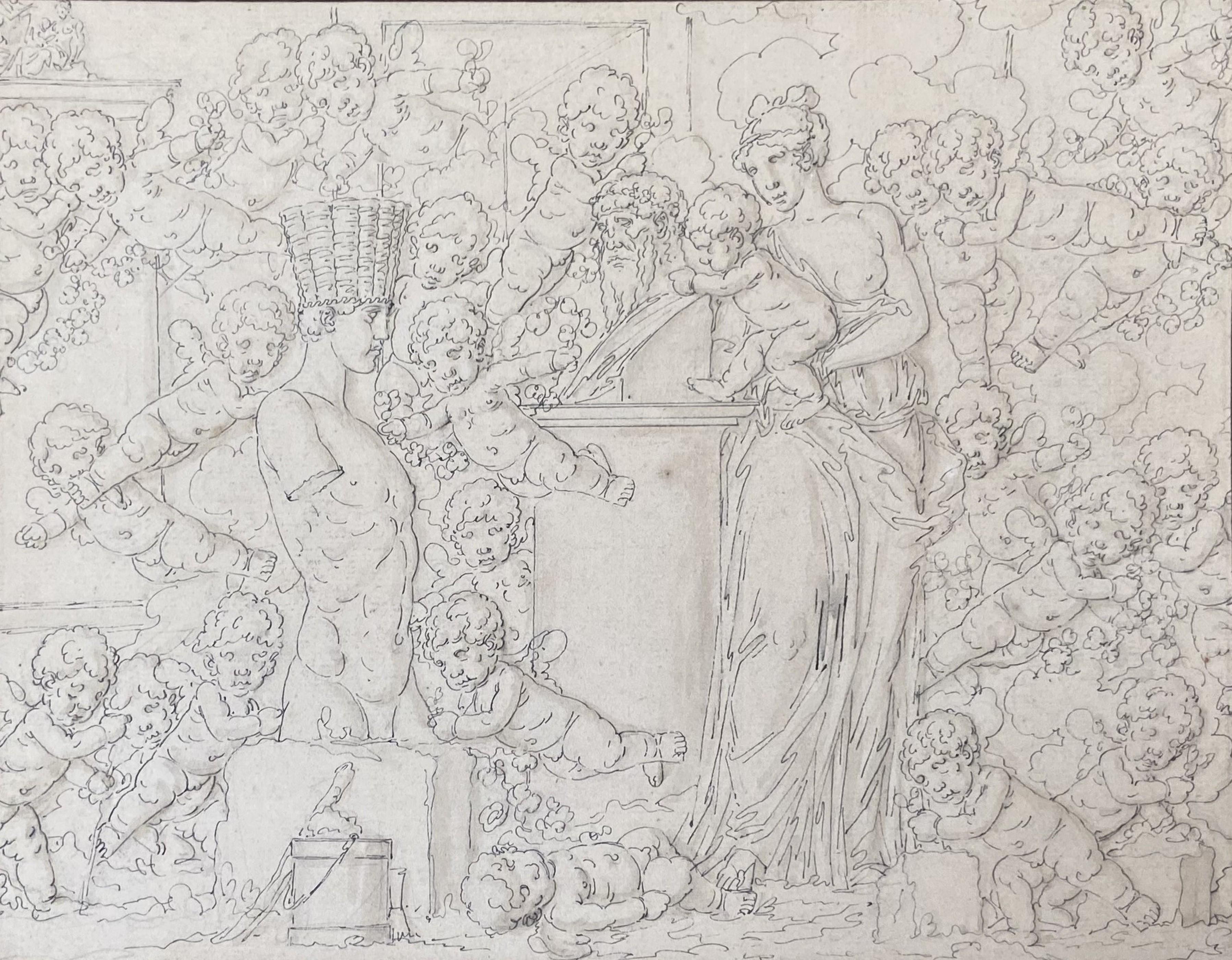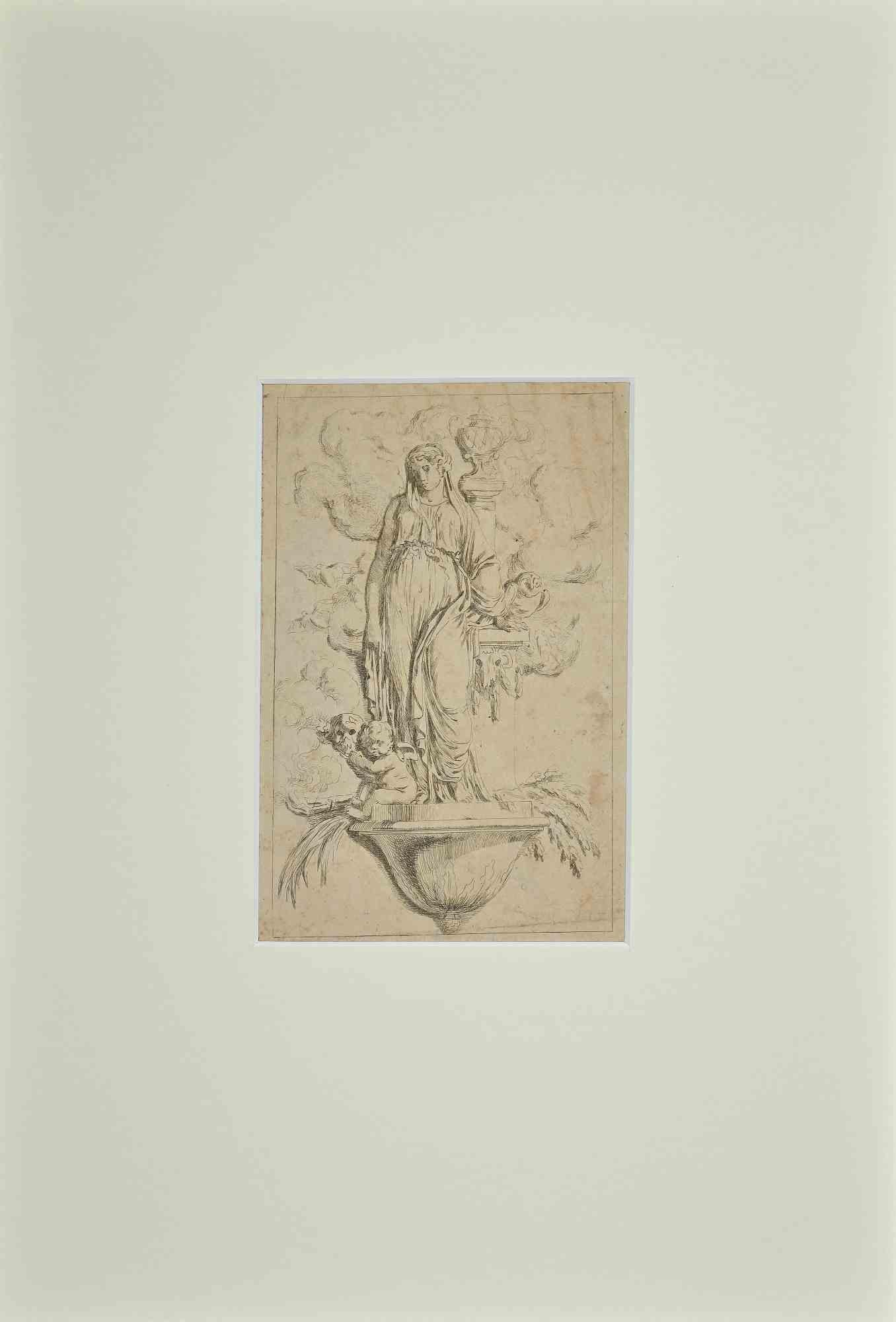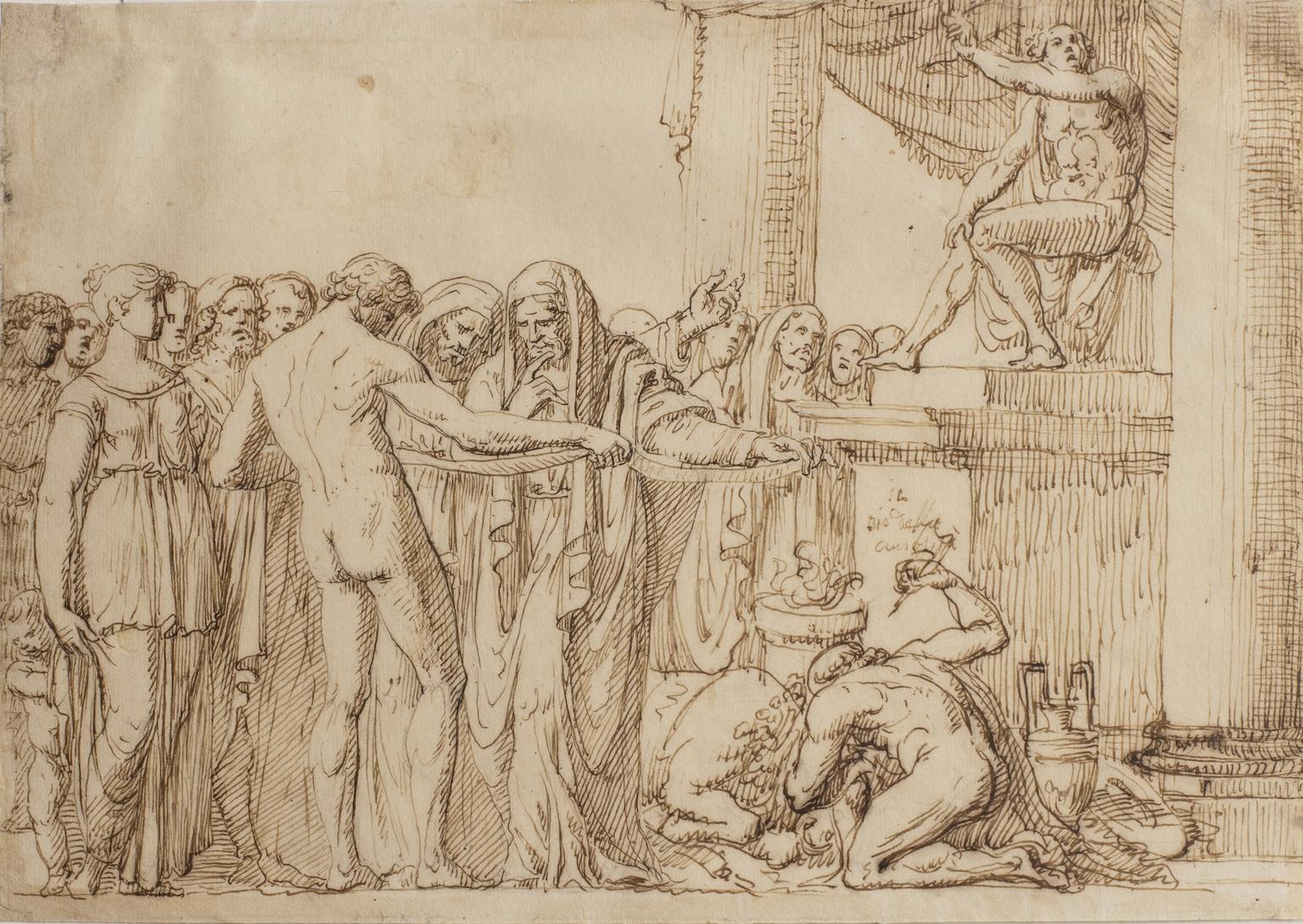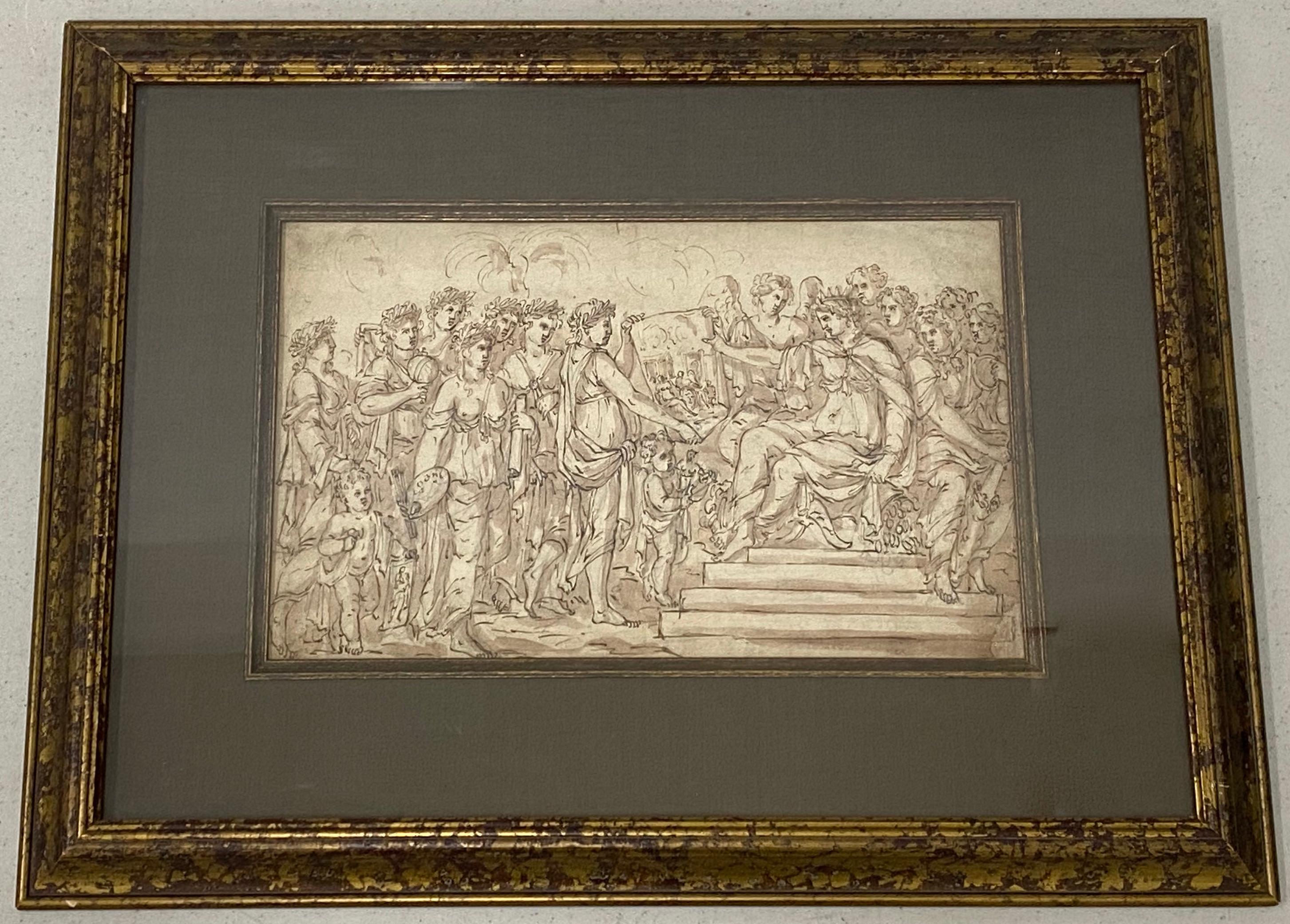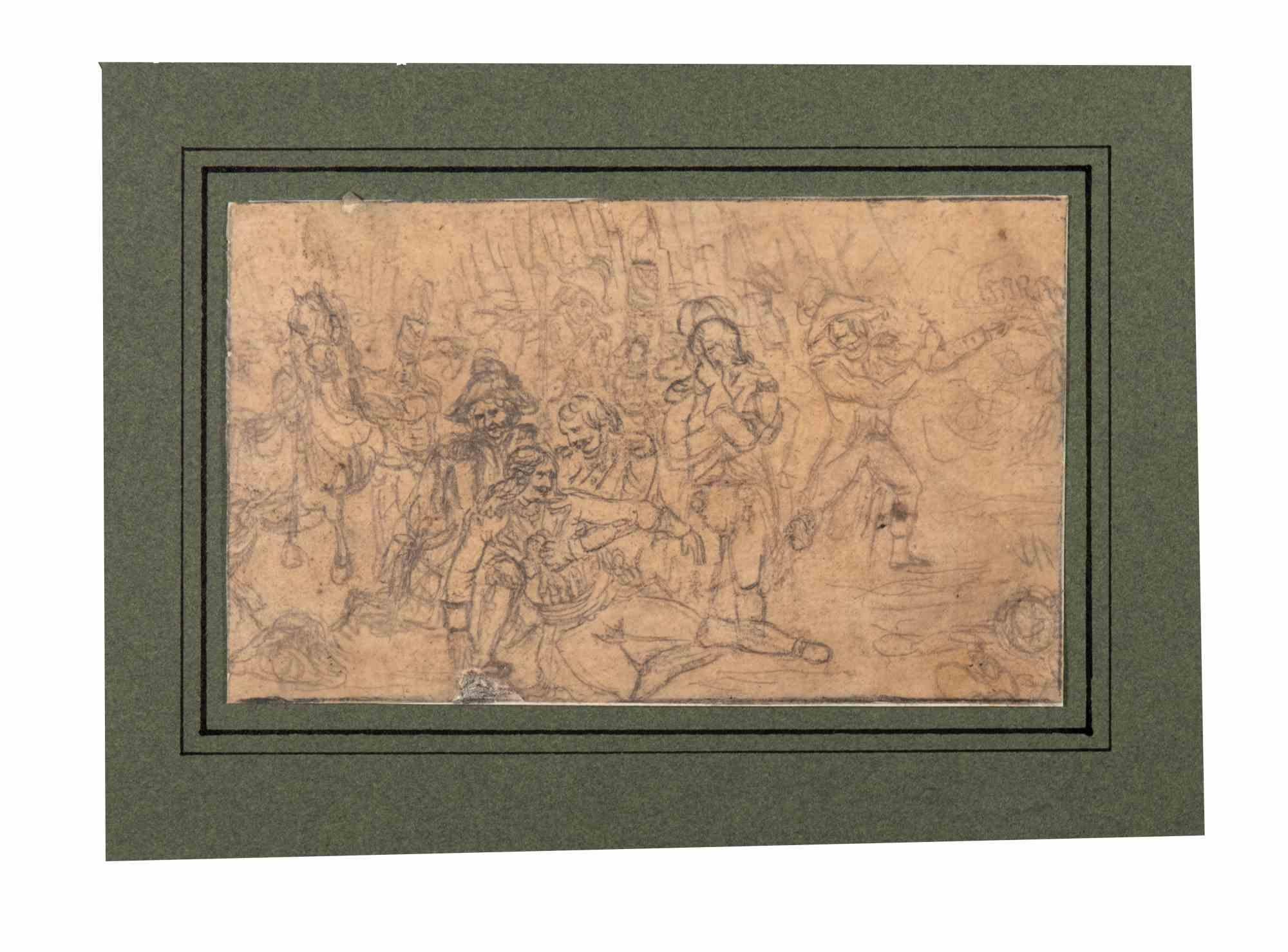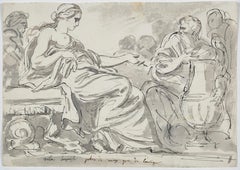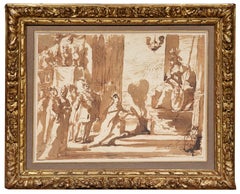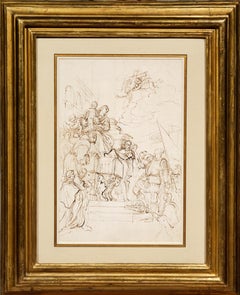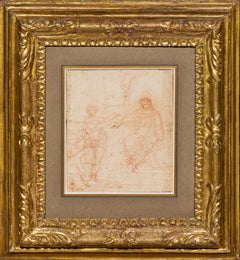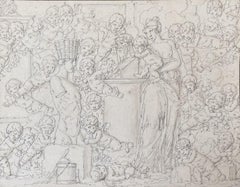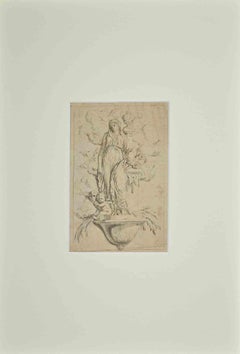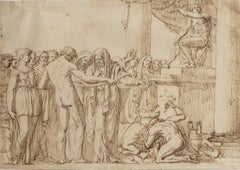Items Similar to Frieze of antique figures, a drawing by the sculptor Antoine-Denis Chaudet
Want more images or videos?
Request additional images or videos from the seller
1 of 7
Antoine-Denis ChaudetFrieze of antique figures, a drawing by the sculptor Antoine-Denis Chaudet1800-1810
1800-1810
$4,133.66
£3,097.40
€3,500
CA$5,804.11
A$6,361.13
CHF 3,321.90
MX$76,326.20
NOK 41,712.15
SEK 39,291.30
DKK 26,658.78
About the Item
Faithful to the neo-classical taste, sculptor Antoine-Denis Chaudet presents us with a frieze of antique figures executed in gray wash over pencil strokes, which is likely inspired by some antique bas-reliefs.
The short career of French sculptor Antoine Denis Chaudet, which spanned over just twenty years, was enough to make him the most influential French sculptor of the Napoleonic period. In addition to his work as a sculptor, he was also a book illustrator and, exceptionally, a painter.
His beginnings were easy: at the age of fourteen, he entered the workshop of Jean-Baptiste Stouf and the following year that of Etienne Gois. He was awarded the Prix de Rome in 1784, spent four years in Italy and returned to France in 1789. A fine painting by Jean-Baptiste Frédéric Desmarais recently sold at Sotheby's depicts him in 1788 at the end of his Italian sojourn.
On his return from Italy, he was admitted to the Académie Royale de Peinture et de Sculpture in 1789, but found himself without a commission due to the Revolution. It was at this point that he began to take an interest in illustration, in particular for Racine’s plays, which were published by Didot between 1801 and 1805. Under the Consulate and especially under the Empire, ha was made famous by his bust of Bonaparte, and produced two statues of the emperor, including the one that topped the Vendome Square column until 1814.
The number of his surviving drawings is estimated at around two hundred. Most were made after his return to Paris. The most important collections are those of the Musée du Louvre, which houses an album of some sixty drawings produced between 1802 and 1806, and those of the Bibliothèque Nationale (54 drawings for medals). His work is also represented in the collections of the Ecole des Beaux-Arts and in the museums of Angers, Besançon and Lille, as well as in the Kunstbibliothek in Berlin and the Pierpont Morgan Library in New York.
His drawings are generally made with a light pencil line, then reworked with a pen or completed, as here, with a bistre or gray wash. Unlike other sculptors such as Bouchardon, Chaudet almost never uses red chalk.
Our drawing is presented framed in a small late 18th century frame in blackened and gilded wood.
Main bibliographical reference
Olivier Michel - Chaudet dessinateur - research published by the Société du Salon du Dessin (Dessins de Sculpteurs II) during the Quatrièmes rencontres internationales du salon du dessin on March 25 and 26, 2009
- Creator:Antoine-Denis Chaudet (1763 - 1810, French)
- Creation Year:1800-1810
- Dimensions:Height: 11.25 in (28.58 cm)Width: 14.25 in (36.2 cm)
- Medium:
- Movement & Style:
- Period:
- Condition:7 ¼” x 11 ¼” (183 x 268 mm) - Framed: 11 ¼” x 14 ¼” (28.5 x 36.2 cm) French late 18th century frame in lacquered and gilded wood.
- Gallery Location:PARIS, FR
- Reference Number:1stDibs: LU1568215522572
About the Seller
5.0
Vetted Professional Seller
Every seller passes strict standards for authenticity and reliability
Established in 2020
1stDibs seller since 2021
10 sales on 1stDibs
- ShippingRetrieving quote...Shipping from: PARIS, France
- Return Policy
Authenticity Guarantee
In the unlikely event there’s an issue with an item’s authenticity, contact us within 1 year for a full refund. DetailsMoney-Back Guarantee
If your item is not as described, is damaged in transit, or does not arrive, contact us within 7 days for a full refund. Details24-Hour Cancellation
You have a 24-hour grace period in which to reconsider your purchase, with no questions asked.Vetted Professional Sellers
Our world-class sellers must adhere to strict standards for service and quality, maintaining the integrity of our listings.Price-Match Guarantee
If you find that a seller listed the same item for a lower price elsewhere, we’ll match it.Trusted Global Delivery
Our best-in-class carrier network provides specialized shipping options worldwide, including custom delivery.More From This Seller
View AllStudy in the Antique Style, a neoclassical drawing by Augustin Pajou
Located in PARIS, FR
In this lively and fresh drawing, probably taken from one of the artist's notebooks, Pajou presents us with a composition freely inspired by antiquity, as a souvenir of a visit to th...
Category
1750s Old Masters Figurative Drawings and Watercolors
Materials
Ink
Allegory of the Treaty of Angoulême, a drawing attributed to Donato Mascagni
Located in PARIS, FR
We would like to thank Mrs. Ursula Verena Fischer Pace for suggesting the attribution to Donato Arsenio Mascagni.
We were immediately seduced by the rich tonalities of this allegory...
Category
1620s Old Masters Figurative Drawings and Watercolors
Materials
Ink
From Renaissance Venice to Barocco Naples, a drawing by Francesco La Marra
Located in PARIS, FR
This vigorous drawing presents a brilliant synthesis between the Venetian tradition of Titian, of which it is a distant echo, and the Neapolitan Baroque of Solimena, which strongly i...
Category
Mid-18th Century Old Masters Figurative Drawings and Watercolors
Materials
Paper, Ink, Felt Pen
Studies for the Judgment of Solomon, a double-sided drawing by Simone Cantarini
Located in PARIS, FR
In this double-sided red chalk study, Simone Cantarini offers us a double reflection on the theme of the Judgment of Solomon. This sheet reveals his precise style and his sense of de...
Category
1640s Old Masters Figurative Drawings and Watercolors
Materials
Chalk, Laid Paper
Allegory of Chastity, a drawing attributed to G. Porta with great provenance
Located in PARIS, FR
This magnificent drawing from the Venetian Renaissance intrigues us in many ways. It depicts an allegorical composition whose meaning partly escapes us: a veiled figure seated on a stone bench (which we have identified as Chastity), seems to be turning away from a woman's bust beside her, below which are two rabbits, a traditional allegory of fertility, but also sometimes of lust.
This drawing, executed on blue paper, undoubtedly belongs to the Venetian Renaissance. The inscriptions on the back of the old mounting board indicate the various attributions considered by its last owner, the British painter and art historian Sir Lawrence Gowing. We have retained the attribution to Giuseppe Porta proposed by art historian John Arthur Gere as the most relevant.
We were incredibly fortunate to find a hexagonal frame of a very similar format for this drawing, the upper corners of which were formerly cut (irregularly). This 17th-century Dutch frame comes from an aristocratic collection in Lombardy, and creates a kind of fascinating chase around this Venetian drawing...
Category
16th Century Figurative Drawings and Watercolors
Materials
Chalk
Three drawings by François Boucher in a mounting by Jean-Baptiste Glomy
By François Boucher
Located in PARIS, FR
We would like to thank Juliette Parmentier-Courreau of the Custodia Foundation for her welcome and support during the consultation of Glomy’s Journal des Ouvrages.
This spectacularly large "feuille de desseins ajustés" commissioned by François Boucher from Jean-Baptiste Glomy is emblematic of the painter's art and mastery of rocaille. It is also fully representative of the taste of this period in the field of decorative arts. The largest of these three drawings, placed at the bottom of the composition, is particularly interesting: dating from around 1756, it constitutes a modello (apparently unpublished) for the frontispiece of the "Catalogue des tableaux de Monsieur de Julienne"), preserved in the Morgan Library in New York.
1. François Boucher, the master of French rocaille
The extraordinary career of Francois Boucher was unmatched by his contemporaries in versatility, consistency and output. For many, particularly the writers and collectors who led the revival of interest in the French rococo during the last century, his sensuous beauties and plump cupids represent the French eighteenth century at its most typical. His facility with the brush, even when betraying the occasional superficiality of his art, enabled him to master every aspect of painting – history and mythology, portraiture, landscape, ordinary life and, as part of larger compositions, even still life. He had been trained as an engraver, and the skills of a draftsman, which he imbued in the studio of Jean-Francois Cars (1661 – 1738), stood him in good stead throughout his career; his delightful drawings are one of the most sought-after aspects of his oeuvre.
As a student of Francois Lemoyne (1688 - 1737), he mastered the art of composition. The four years he spent in Italy, from 1727-1731, educated him in the works of the masters, classics and history, that his modest upbringing had denied him.
On his return to Paris in 1734, he gained full membership of the Royal Academy of Painting and Sculpture with his splendid Rinaldo and Armida (Paris, Musée du Louvre). Although, throughout his career, he occasionally painted subjects taken from the Bible, and would always have considered himself first as a history painter, his own repertoire of heroines, seductresses, flirtatious peasant girls and erotic beauties was better suited to a lighter, more decorative subject matter. His mastery of technique and composition enabled him to move from large scale tapestry...
Category
1750s Old Masters Figurative Drawings and Watercolors
Materials
Chalk, Ink
You May Also Like
Louis-Félix de La Rue (1730-1777) A Mythological scene, drawing
By Louis-Félix Delarue
Located in Paris, FR
Louis-Félix de La Rue (1730-1777)
A Mythological scene
Pen and black ink on paper
Bears an old inscription with the name of the artist on the lower left bo...
Category
1770s Old Masters Figurative Drawings and Watercolors
Materials
Ink
Study for a Frieze - Original Pen Drawing - 18th Century
Located in Roma, IT
Study for a Frieze is an original drawing in pen realized by an anonymous artist in the 18th Cent.
Good conditions but aged.
The artwork is depicted through perfect hatching in a w...
Category
18th Century Modern Figurative Drawings and Watercolors
Materials
Pen
Figurative drawing neoclassical Tuscan historical subject from the 19th century
By Francesco Nenci
Located in Florence, IT
The proposed attribution for this drawing in brown ink on paper is the name of the painter and academician of the Tuscan-Roman neoclassical cohort Francesco Nenci (Anghiari, April 19...
Category
Early 19th Century Other Art Style Nude Drawings and Watercolors
Materials
Paper, Ink
18th to 19th Century "Art Presentation" Old Master Drawing
Located in San Francisco, CA
18th to 19th Century "Art Presentation" Old Master Drawing
Remarkable old master pen, ink and wash drawing of an art presentation
Dimensions 14" wide x 8.5" high
The lightly distr...
Category
Early 19th Century Figurative Drawings and Watercolors
Materials
Ink, Watercolor
Figures - Drawing by Denis Auguste Marie Raffet - Mid-19th Century
By Denis Auguste Marie Raffet
Located in Roma, IT
Figures is an Original Pencil Drawing realized by Denis Auguste Marie Raffet (1804-1860).
The little artwork is in good condition included a green cardboard passpartout (32.5x50 cm)...
Category
Mid-19th Century Modern Figurative Drawings and Watercolors
Materials
Pencil
Old Master Drawing, Baroque, Jacob de Wit, Allegory of Victory, Putti, Ships
By Jacob De Wit
Located in Greven, DE
Two putti with symbols of war and victory (cannons, cannonballs, armour, anchor, lion's head, laurel branch/ olive branch, flag, staff with helmet) in pediment triangle.
Probably a design for a painting or architecture
Pen-and-ink drawing in black on brownish paper, black wash
Plain gold moulding with UV glass
Allegory of Victory, 18th Century, Old Master Drawing, By De Wit, Figurative
Jacob de Wit...
Category
Late 17th Century Baroque Figurative Drawings and Watercolors
Materials
Paper, Crayon
$2,149 Sale Price
35% Off
More Ways To Browse
Antique Frieze
French Sculptor
Paintings By The Masters
18th Century Pen And Ink
Red Chalk Drawing
Bonaparte Bust
Erte Gouache 1940
Frederic Bruly Bouabre
George Anderson Short
George Frederic Watts
Gordon Phillips
Jean Effel
Man With Violin
Miniature Saddle
Mordi Gassner
Paris Watercolor Cafe
Watercolor Signed T
Winslow Homer Watercolors
